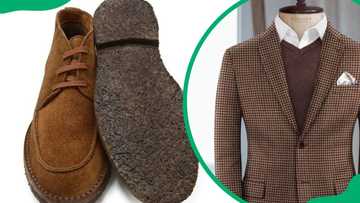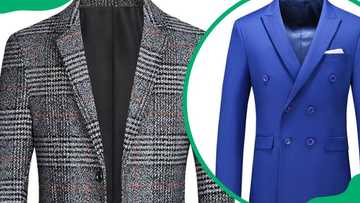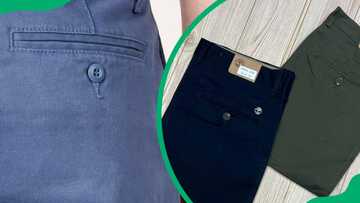Tuxedo vs suit: Essential differences and when to wear
The age-old debate of tuxedo vs suit often arises when discussing formal attire. Understanding the key differences between these two classic options can assist you in making the right choice for any occasion. Whether it is weddings or black-tie events, knowing when to wear a tuxedo or a suit can elevate your style and leave a lasting impression.
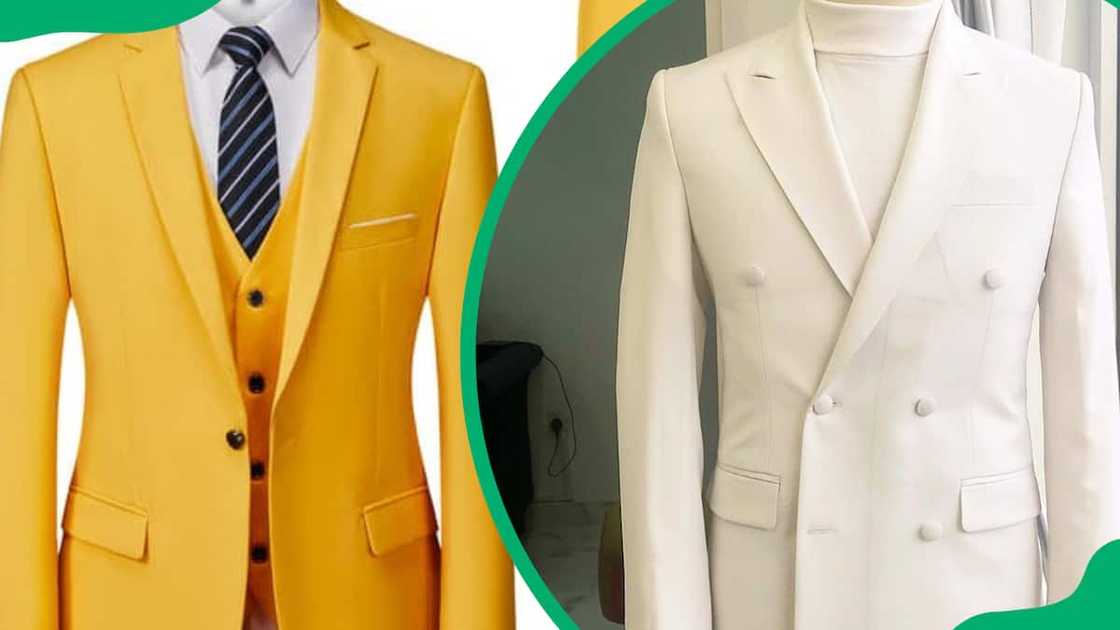
Source: UGC
TABLE OF CONTENTS
Tuxedos and suits, with roots dating back to the early 19th century, have remained timeless for formal occasions. They symbolise elegance, from prestigious events like the Oscars to weddings and corporate gatherings. While similar, there are still a few differences between a suit and a tux.
What is a tuxedo?
Also called a dinner jacket or tux, a tuxedo is a formal suit recognised for its sophisticated design and luxurious fabrics. It epitomises elegance and formality and is typically reserved for special events like weddings and galas.
A tuxedo comprises a jacket with satin lapels, matching trousers, a bow tie or ascot, a cummerbund or waistcoat, and patent leather shoes.
When should a man wear a tuxedo?
A man should wear a tuxedo for the most formal occasions, such as black-tie events like weddings, proms, galas, and charity events. Awards ceremonies like the Oscars and formal dinners or parties call for a tuxedo to make a stylish and sophisticated statement.
What is a suit?
A suit is a coordinated outfit comprising a jacket and trousers, typically worn for formal or business events but adaptable to casual settings based on design and fabric. Suits come in different materials such as wool, cotton, polyester, or linen, and various styles including two-piece, three-piece, or double-breasted.
What is the difference between a suit and a tuxedo?
Tuxedos and suits differ in formality, fabric, details, and style. While both offer versatility for various occasions, here are some key differences between a suit and a tux:
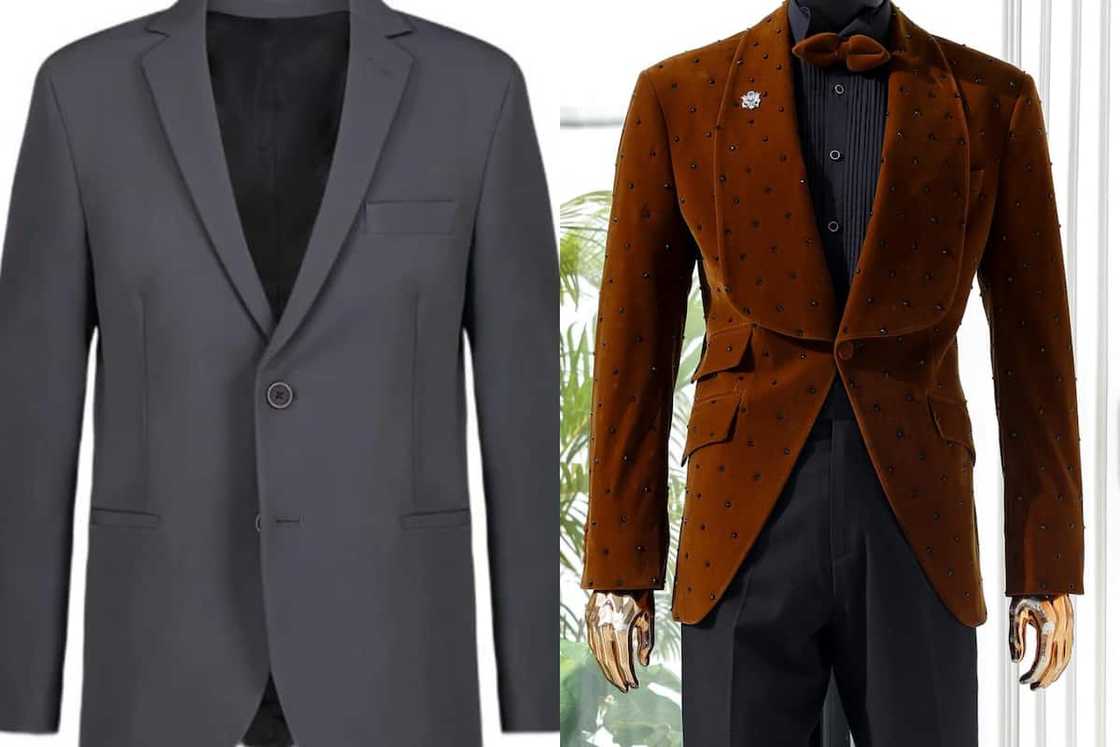
Source: UGC
The four key differences | Tuxedos | Suits |
Formality | Reserved for black-tie events and formal occasions | Versatile for different settings, from business to social events |
Fabric | Crafted from luxurious materials like wool, silk, or velvet | Offers a wider range, including wool, cotton, and blends |
Details | Feature satin lapels, covered buttons, and a satin trim | Have notched or peaked lapels with plastic or fabric-covered buttons |
Style | Boast a formal and elegant aesthetic with classic black or midnight blue colours | come in various colours, patterns, and styles, allowing for personal expression and individual style preferences |
Tuxedo pants vs suit pants
Tuxedo pants and suit pants diverge in fabric, fit, and detailing, reflecting their distinct formalities. While tuxedo pants exude opulence with luxurious materials and sleek silhouettes, suit pants prioritise versatility and comfort. Here are some of the key differences between tuxedo pants and suit pants:
Tuxedo pants | Suit pants |
Made from luxurious fabrics like wool, silk, or velvet | Typically made of wool, cotton, or polyester |
Tailored with a straight, trim fit and no belt loops | Have belt loops and offer a looser, more relaxed fit |
Often feature satin stripes along the sides | Lack of satin stripes along the sides |
Paired with a sash rather than a belt | Combined with a belt for wearing |
Tuxedo shirt vs suit shirts
When it comes to distinguishing between tuxedo shirts and suit shirts, the differences are notable. While suit shirts offer versatility and can vary in patterns, a classic white collared shirt is a fail-safe option for any suit ensemble. Tuxedo shirts adhere to specific guidelines, including the following:
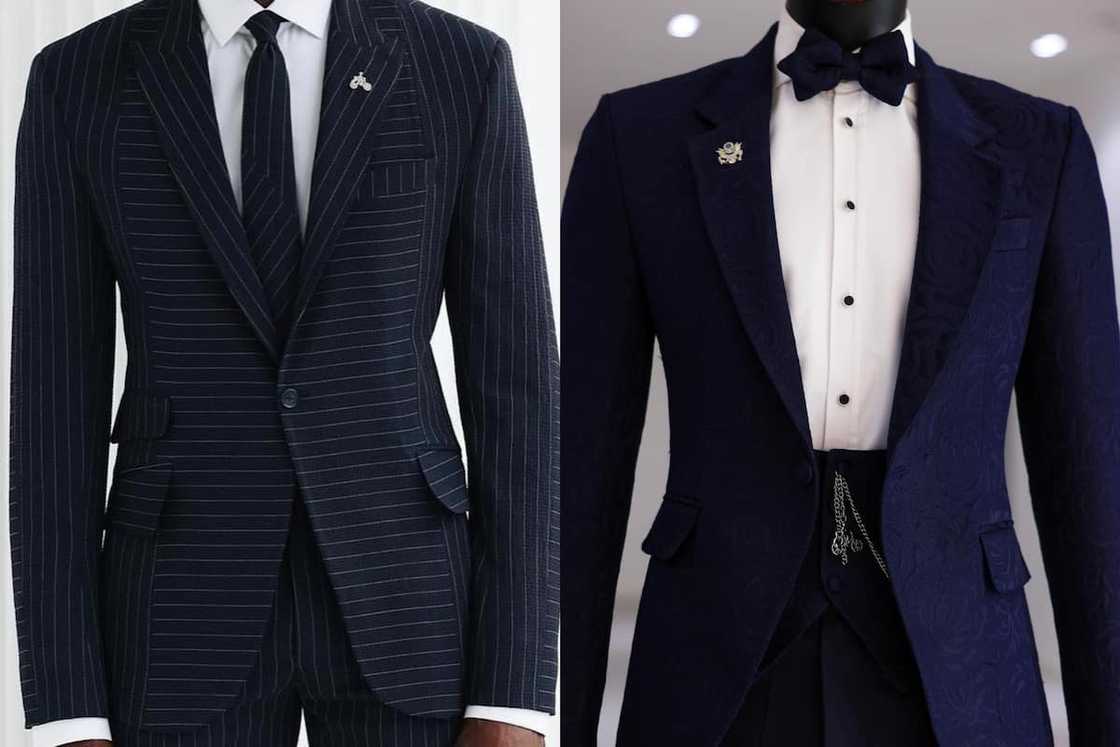
Source: UGC
- Tuxedo shirts are primarily white, although black ones may sometimes be acceptable;
- They typically feature wingtip collars ideal for showcasing a bow tie;
- Tuxedo shirts always come with French cuffs, necessitating the use of cufflinks;
- Optional pleats may adorn tuxedo shirts, adding a touch of sophistication.
Tux vs suit wedding
If the dress code is black tie or formal, opt for a tuxedo for an elegant and fitting look. For casual or daytime weddings, a suit may suffice.
If you are uncertain, choose a suit for daytime events, though both suits and tuxedos work for evenings. But always ensure you follow the dress code and confirm it with the couple or invitation.
Is it OK to wear a suit instead of a tuxedo?
It is generally OK to wear a suit instead of a tuxedo, but only in less formal situations or if you do not own a tuxedo. A suit is less formal, so it might not be suitable for events like black tie affairs. Always check the dress code or ask the organiser if you are uncertain.
Tuxedo vs suit for prom
When choosing between a tuxedo and a suit for prom, consider the event's formality and dress code. A tuxedo jacket is a traditional and more formal choice, especially for proms with a black tie or formal dress code. It is best for achieving a polished look and fitting in with other attendees.
Can a black suit be worn as a tuxedo?
Due to subtle differences, you cannot wear a black suit as a tuxedo. A tuxedo features satin or grosgrain stripes on the jacket, a bow tie, cummerbund, or waistcoat, and a specific tuxedo shirt with a pleated bib front and cufflinks. In some less formal black-tie events, a black suit with a bow tie may suffice, but not for white or black-tie weddings.
Why are tuxedos more expensive than suits?
Tuxedos are often more expensive than suits, ranging from around $200 to $1500. Here is why:
Fabric quality
They are crafted from finer, more luxurious wool, silk, or velvet fabrics. These are inherently more expensive than materials used for suits.
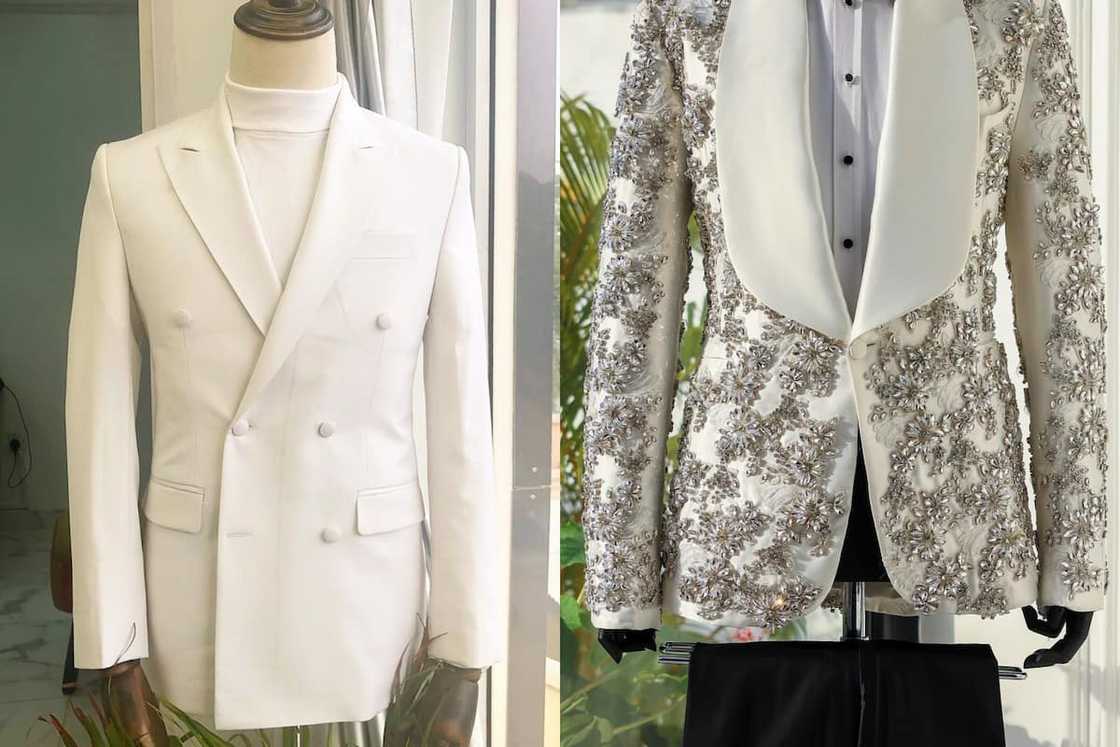
Source: UGC
Construction and tailoring
The intricate detailing of tuxedos, like satin lapels and covered buttons, demands skilled craftsmanship and meticulous tailoring techniques. And these to production costs.
Formality and occasion wear
They are reserved for formal events like black-tie affairs and weddings. Their exclusivity and limited use contribute to their higher price point.
Brand and designer
Tuxedos from renowned designers or luxury brands carry a premium. This is due to their prestigious reputation and brand recognition.
Accessories
They often require specific accessories, such as bow ties, cufflinks, and formal shoes. These increase the overall cost of the ensemble.
While the tuxedo vs suit debate has a long-standing history, knowing when to wear each can enhance your overall look and style for various occasions. Whether it is a wedding or a black-tie event, your understanding will help you confidently and elegantly make the right fashion statement.
READ ALSO: How to choose suit colours: a guide for picking the perfect shade
As published on Briefly, suits are evergreen but fashionable pieces that create the most elegant and stylish looks any man can get. A man needs at least two or three of these.
Buying a new suit can be confusing, especially if you are unsure about your desired colours. Although most men believe they only need a particular shade, the reality dictates that there is a suit for every occasion.
Source: Briefly News

